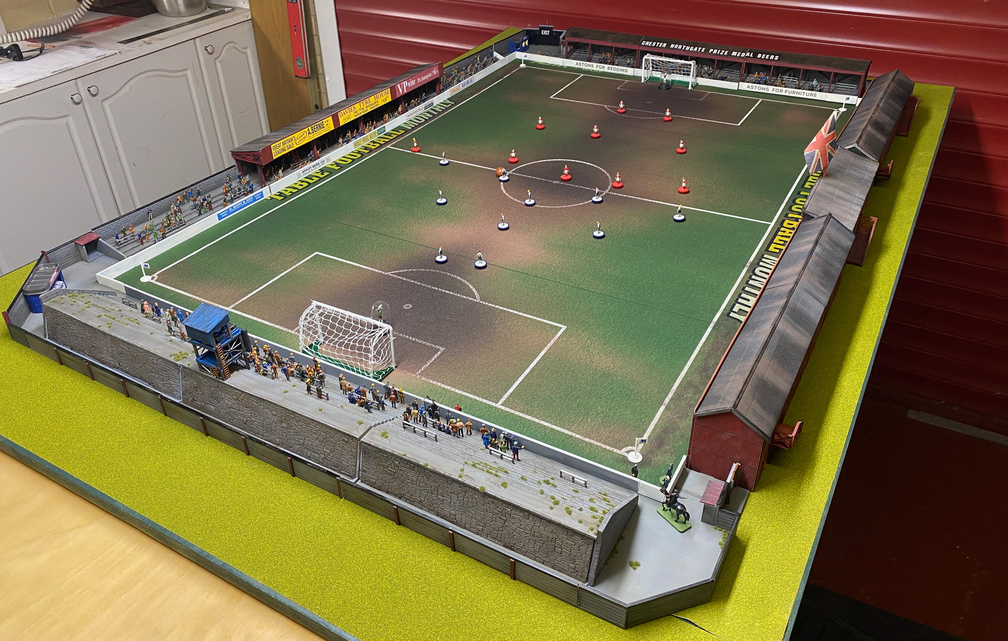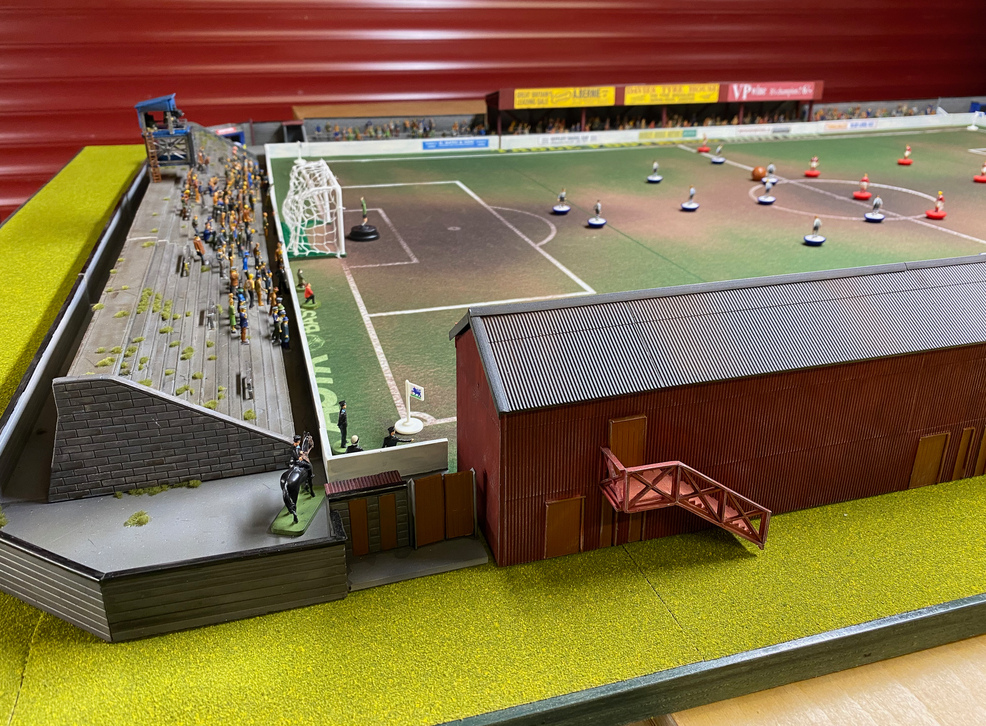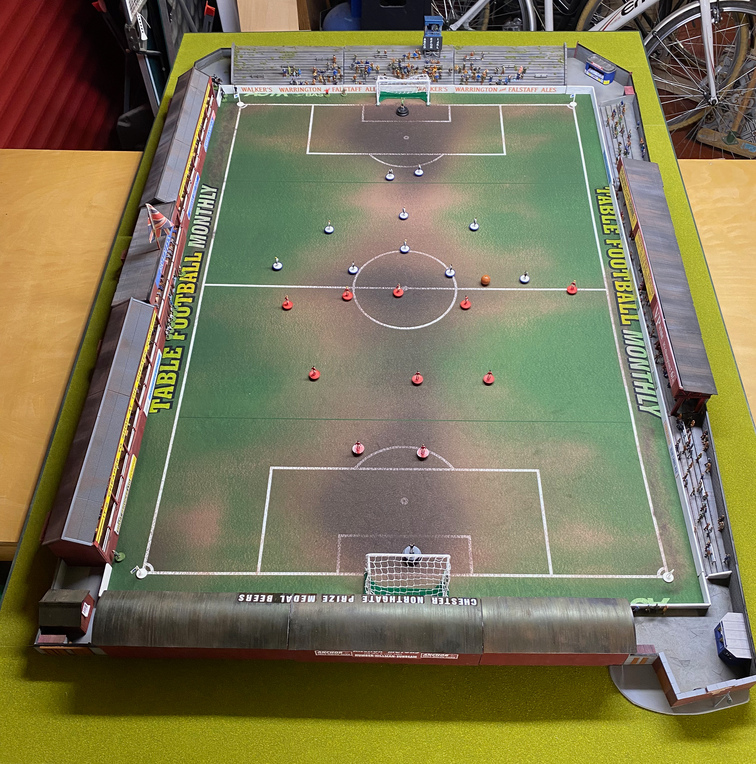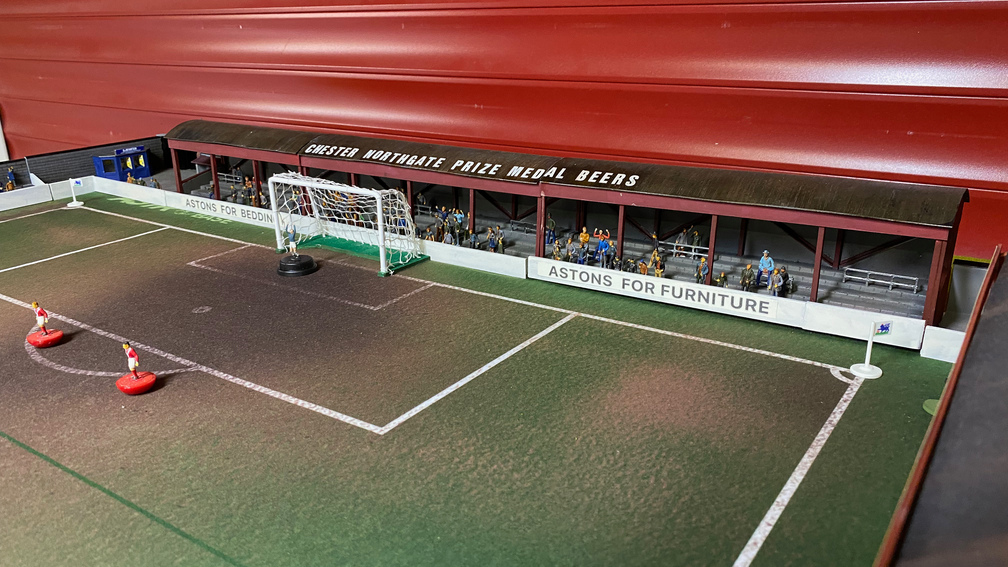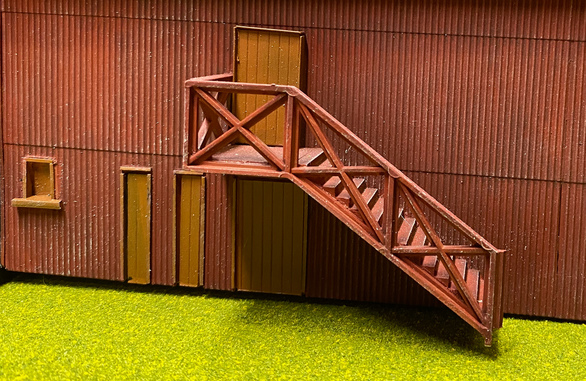Derek Astbury, the son of former Chester player Tommy Astbury, has used lockdown to construct a superb model of the old Sealand Road stadium based on how the ground looked when his father was playing for the club in the 1940s and 1950s. Measuring 6ft by 4ft it took six months to build and it is hoped that it can be shown at the Deva Stadium some time in the future. I would urge anyone to go and see it if the opportunity arises.


Derek explains how he tackled the project:
“I retired just before the first lockdown and during the early months did what most people were doing i.e sort out family photos/ tidy the attic etc. While doing this I came across some old subbuteo equipment and after watching a YouTube programme I discovered there was an internet community of 50-60 year olds revisiting the game.
I decided to buy some players online to paint myself and found that there were some in vintage style kits and the idea was born. I would paint Chester FC from the time that my dad played together with other teams he played against. I thought I could then display them with a programme of the match for example Bolton Wanderers for his testimonial, Hull City (Raich Carter) and Stoke City (Stanley Matthews).
Then I moved on to the Stadium itself which I started to construct on January 21st using 3mm plastic sheet that was destined for the skips where I used to work. I have been building on and off since then on the occasions it has been warm enough in my garage to let my fingers work.
I have had the Images of Sport Book for many years and most of my reference has come from that as well as the Chester Football History Facebook page and my dad’s scrapbooks and photos. I did start to look at photos differently ie not at the subject but at the background details to see what the stands looked like and what adverts were on display. Most of the photographs are taken inside the ground so getting the outside details was quite a struggle. Even people who had been to the ground many times didn’t know what the other side of the Kop looked like.
Some things came as a surprise to me during the build research. One was the office building between the Main Stand and the Barn at the Sealand Road End. Another was the fact that the Popular Side was wider at the Kop end. I only realised this when I saw an aerial shot and had to start again on this stand. I also decided that I had to include the lamppost in front of the plaque on the front wall. Other problems for me were that the photos of the era were in black and white so I had to do some further research on colours (or guess!). The VP Wine advert on the Popular side just looks maroon to me.
It was also important to me that the game of subbuteo still remained playable and the stands were not too big to reach over. This means there are not the correct amount of seats in the stands or steps on the terraces so I couldn’t fill them with the 20,000 spectators that saw the Chelsea FA Cup game. From the positive comments I have received so far I think I have managed to capture the essence of the Sealand Road Stadium.


